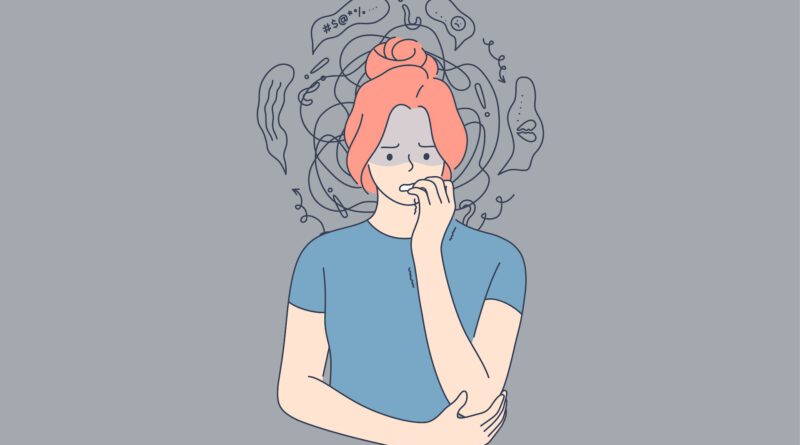Your kid saw something totally inappropriate online. Here’s what to do next.

If your kid has gone online more than a few times, chances are they’ve seen or encountered something inappropriate.
That could be pornography, violence, bullying, disordered eating, messages from strangers, suicidal thinking or behavior, and even child sexual abuse material.
It happens probably more than children and teens will ever admit. After all, describing such content — and how they found or received it — can make for an awkward conversation with a parent.
But all of that disturbing content, and more, is online for them to discover, and it can negatively affect their mental health, says Dr. Janis Whitlock, a senior advisor at The Jed Foundation (JED).
Young people may see something that causes a profound sense of worry about their safety in the world or is “radically out of alignment” with what they’ve previously observed or considered, Whitlock says.
While an adult might respond to encountering child sexual abuse material with rage, she notes that a child is more likely to respond with deep fear. Such experiences can increase or amplify depression and anxiety, as well as make them feel helpless against injustices that other people, including children like them, may endure.
In order to prepare yourself (and a parenting plan) for a delicate but necessary conversation with a kid or teen who has seen something awful online, consider these tips from Whitlock:
1. Let your child know they can talk to you about what they see or do online.
A recent annual report from Bark, a parental monitoring service, identified key categories of inappropriate online content that young users encounter, sometimes at alarmingly high rates, like suicidal ideation, violence, disordered eating, and sexual content.
The prospect of talking in advance with a young person about each type of content may seem too daunting to a parent. Some subjects may not be even developmentally appropriate to discuss with younger children.
But Whitlock says parents needn’t thoroughly explain the variety of awful things a child might see online. Instead, she recommends helping children and teens know that when they’re experiencing uncomfortable emotions in response to content, that’s a good time to talk to their parent. These feelings might include confusion, shame, embarrassment, disgust, and fear.
“Kids need to be able to go say, ‘I think I’m in over my head, or something’s happening here that just doesn’t feel right.'”
2. Respond with openness when they tell you about something inappropriate.
Ideally, when a child starts that conversation, their parent will react calmly, says Whitlock. It’s not helpful to shame a child for clicking on a certain link or exploring content they shouldn’t have. Remember that a curious kid may Google a phrase they heard at school, not realizing what results will come back.
Instead, Whitlock recommends validating whatever a child is feeling in response to the content they viewed, and remaining curious and nonjudgemental as they share more.
She understands that conversations about concerning content are bound to make some parents feel awkward or uneasy. It’s important to be mindful of those emotions and stay centered when talking to a child about their own feelings, so that the discussion stays focused on supporting the child.
If it’s in a child’s best interest to restrict their access to the internet or a device based on what they viewed, parents should still avoid being overly punitive. If a child and parent had already agreed on certain boundaries that were then violated, enforcing the consequences can help a child take responsibility for how they use their device.
3. Don’t wave away their complex feelings.
Some children may share that they feel simultaneously pulled in and repulsed by inappropriate content. Parents should honor this level of candor by helping a child understand that emotions are complex.
Certain types of online content are so shocking precisely because that’s what draws people’s attention and curiosity, even if they don’t like how their interest or voyeurism makes them feel.
Whitlock says that kids and teens are wired for connection and a sense of belonging, particularly in instances when they feel unsure about themselves or the world around them. Dismissing or questioning a complicated response can leave a child feeling alone or misunderstood. They may try to remedy that disappointment by seeking out peers or strangers online who identify with them.
“What they cannot find at home or in their offline life, in terms of support, they may go looking for elsewhere, and those places where they find it may not be authentically supportive,” says Whitlock.
Additionally, trying to reassure a child that the awful thing they saw isn’t happening to them or in their life doesn’t help them process the fact that it happens to other kids like them — and the sense of injustice or helplessness they may feel as a result.
Whitlock says parents should acknowledge that there are other people who share their child’s outrage, who may also be working hard to prevent things like bullying and child sexual abuse.
Parents who have tried these approaches with little success may consider seeking help from a mental health professional, Whitlock says.
4. Review safety settings and controls.
While parents and youth should be able to rely on robust safety measures designed to protect minors online, that’s far from the everyday reality, particularly on social media platforms.
Whitlock urges parents to advocate for improved safety policies and platform safeguards. However, in their absence, she says parents should become very familiar with how to use safety controls and features to limit certain types of content.
She notes that most routers now include features that allow parents to selectively block access to content and the internet by device. Cell service carriers also offer parental control features, as do commonly used web browsers. Parents should consider blocking access to adult sites as well as filtering search results to exclude explicit content.
Parents can also review privacy settings on gaming and social media platforms as a way to help protect their child from mature and explicit content, in addition to blocking messages from users your child does not know.
Parents should discuss what they’ve blocked and limited with their child, and why they made those choices. They might also invite their child to make similar selections as a way of empowering them.
Whitlock emphasizes how critical it is to have an ongoing dialogue with children about these issues: “Parents need to do everything they can to keep those doors of communication open.”

